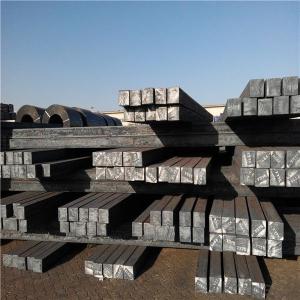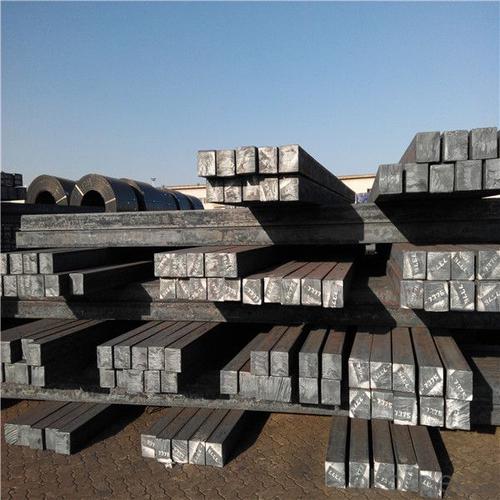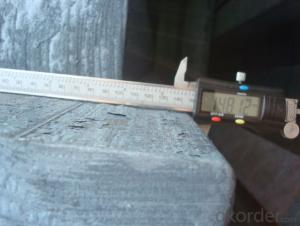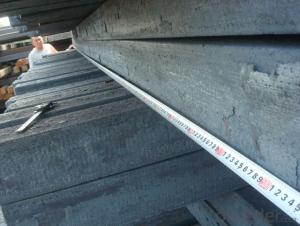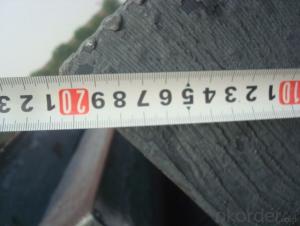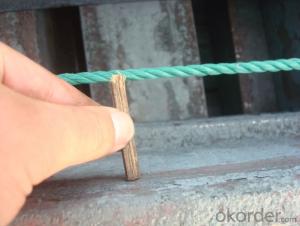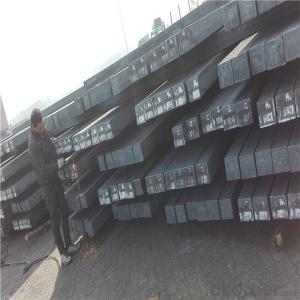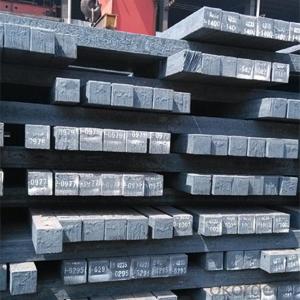Steel Billet high quality hot rolled in Best Price
- Loading Port:
- Dalian
- Payment Terms:
- TT OR LC
- Min Order Qty:
- 1000 m.t.
- Supply Capability:
- 15921 m.t./month
OKorder Service Pledge
OKorder Financial Service
You Might Also Like
Specification
Steel billets have distinct characteristics as compared with already furnished steel bars and products. Billets
have a specific grain structure, which enables the metal to be processed more intricately. Steel billets are also
known for their malleability and ductility, especially when exposed to varying temperatures during shaping and
molding.
Billet: equal cross section width and height, or a huge difference, mainly used for rolling steel, wire rod. ,
Gade:
Standard | C(%) | Mn(%) | S(%) | P(%) | Si(%) |
Q195 | ≤0.12 | ≤0.50 | ≤0.040 | ≤0.035 | ≤0.30 |
Q235 | ≤0.20 | ≤1.40 | ≤0.045 | ≤0.045 | ≤0.35 |
Q275 | ≤0.22 | ≤1.50 | ≤0.045 | ≤0.045 | ≤0.35 |
20MnSi | 0.17-0.25 | 1.2-1.6 | ≤ 0.050 | ≤ 0.050 | 0.40-0.80 |
3SP | 0.14-0.22 | 0.40-0.85 | ≤ 0.050 | ≤ 0.040 | 0.05-0.15 |
5SP | 0.28-0.37 | 0.50-1.00 | ≤ 0.050 | ≤ 0.040 | 0.15-0.30 |
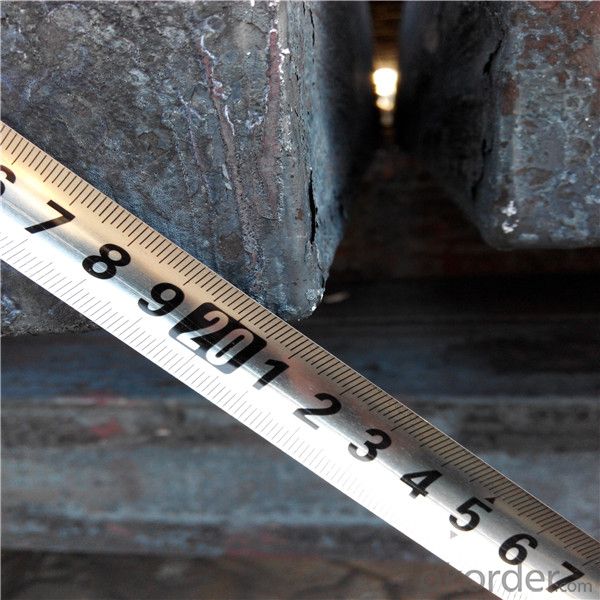
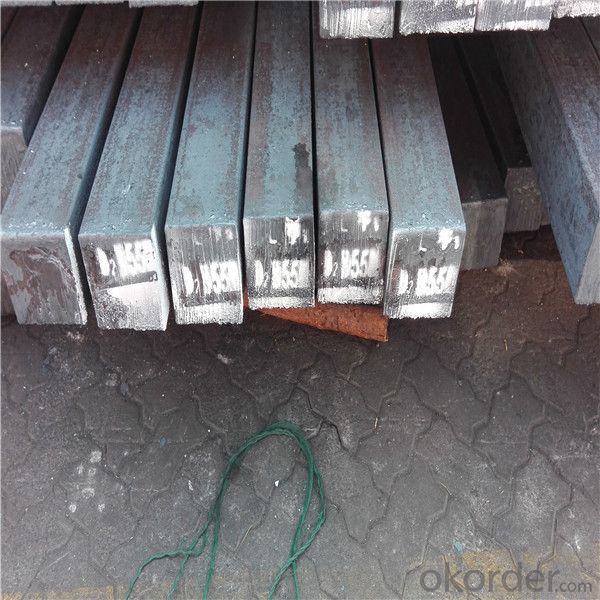
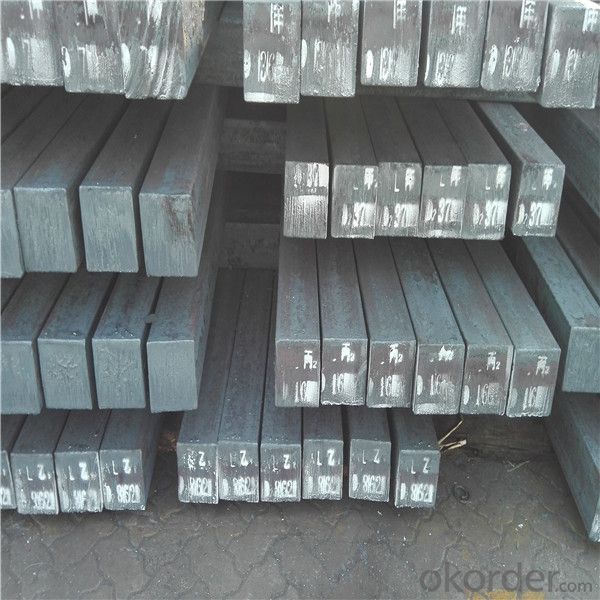
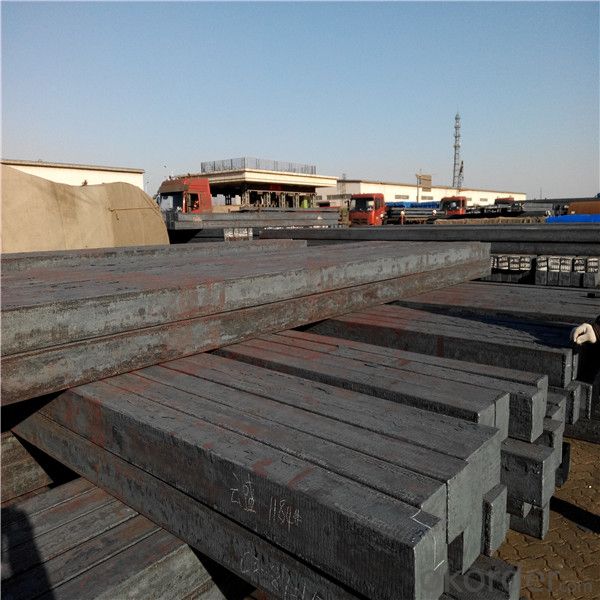
Other Specifications
Squar Tolerance: ±4
Length Tolerance: +100mm
Romboidity/Difference Diagonals: no more than 0.7%
Camber: no more than 1.5%(%)
Twist: no more than 3 degrees per 1 meter length
Our Advantage
* Professional Personnel of Steel Trading
* Strong Steel Industry Background
* Conveniently Geographic Location
Our Commitment
* Sincere, Practical, Efficient and Developing
* High Quality Steel Production
* Competitive Price and Timely Delivery
Packing :
Within 30 days
1.Standard export package
2.In bundles with steel strips
3.As the requirements of the customers
FAQ:
Q: How to get quotation?
A: When we receive your detailed enquiry, we will set the best price based on standard,
steel grade, outer diameter, wall thickness, quantity, country.
And we will send quotation to your mailbox.
Q:How to guarantee the quality of the products?
A:We have established the international advanced quality management system,every link from raw material
to final product we have strict quality test;We resolutely put an end to unqualified products flowing into the market.
At the same time, we will provide necessary follow-up service assurance.
Q:How long can we receive the product after purchase?
A :In the purchase of product within three working days, We will arrange the factory delivery as soon as possible.
The pecific time of receiving is related to the state and position of customers.
- Q: How are steel billets used in the production of industrial boilers?
- Steel billets are used in the production of industrial boilers as they serve as the primary raw material for manufacturing boiler components such as tubes, pipes, and plates. These billets are heated, forged, and shaped into various boiler parts, ensuring the strength, durability, and reliability required for efficient boiler operation in industrial settings.
- Q: How are steel billets used in the production of oil and gas pipelines?
- Steel billets are essential in the production of oil and gas pipelines as they serve as the initial material for manufacturing these pipelines. Essentially, steel billets are semi-finished steel products that typically have a rectangular or square shape. To manufacture oil and gas pipelines, a series of manufacturing processes are performed on the steel billets. Initially, the billets are heated to high temperatures in a furnace in a process known as billet heating. This heating process increases the malleability of the steel, making it easier to shape. Once the desired temperature is reached, the billets are then passed through a series of rollers to transform their shape into a cylindrical form. This process, called hot rolling, further enhances the mechanical properties of the steel, making it stronger and more durable. Following hot rolling, the steel goes through a process known as quenching and tempering. Quenching involves rapidly cooling the steel to increase its hardness, while tempering is a heat treatment process that reduces the brittleness of the steel, making it less prone to cracking. After these processes, the steel billets are welded together to form the final pipeline. This welding process ensures the integrity and strength of the pipeline, enabling it to withstand the high pressures and harsh environments associated with oil and gas transportation. In conclusion, steel billets play a crucial role in the production of oil and gas pipelines. They serve as the foundational material and undergo various manufacturing processes to transform into durable and high-strength pipes that efficiently transport oil and gas over long distances.
- Q: What are the different methods of steel billet surface etching?
- There are several methods of steel billet surface etching, including chemical etching, electrochemical etching, and laser etching. Chemical etching involves immersing the billet in a solution that reacts with the surface to remove a thin layer of material. Electrochemical etching uses an electric current to dissolve the surface of the billet in a controlled manner. Laser etching uses a high-powered laser to selectively remove material from the surface, creating a permanent etched pattern. These methods offer different levels of precision, depth control, and speed, allowing for various applications in steel manufacturing and surface treatment.
- Q: How are steel billets used in the production of structural steel sections?
- Steel billets are used as a primary raw material in the production of structural steel sections. These billets are heated and then passed through a series of roller mills to shape them into various structural profiles such as beams, channels, angles, and columns. The hot rolling process helps to improve the strength and durability of the steel, making it suitable for construction purposes.
- Q: Can steel billets be used in the production of automotive components?
- Yes, steel billets can be used in the production of automotive components. Steel billets are raw, semi-finished steel products that can undergo further processing, such as rolling, forging, or machining, to create various automotive parts like engine blocks, suspension components, gears, and more. The use of steel billets allows for the production of high-strength and durable automotive components, making them a popular choice in the automotive industry.
- Q: How are steel billets shaped into rods or wires?
- Steel billets are shaped into rods or wires through a process known as hot rolling. The billets are heated to high temperatures and then passed through a series of rollers, which gradually reduce their size and shape them into the desired rod or wire form. This process allows for precise control over the dimensions and properties of the final product.
- Q: Iron type frequency furnace, billet 150, continuous casting billet between the hole, please help net friend to find the original, please ask non answer, not Xie, please mention, understand enough, please resume me
- 1: new furnace, new furnace lining contains more gas2: raw material no clean, no coincidence?3: melt protection? Temperature is not high, no refining and static?4:3 point, mold and traction to look for defects, mold cooling effect - water temperature - traction line and horizontal - traction process5: stop and pull
- Q: Can steel billets be used for artistic purposes?
- Absolutely, steel billets have the potential to be utilized for artistic purposes. Although steel billets are typically employed as raw materials for industrial applications such as construction or manufacturing, they can also be artfully transformed into exquisite pieces. Sculptures, decorative items, and even functional objects like furniture can all be crafted from steel billets by artists. The malleability of steel allows artists to shape and mold it into various forms, and its robustness and longevity ensure that the artwork will endure. Additionally, the metallic appearance of steel can infuse artistic creations with a contemporary and industrial aesthetic. All in all, steel billets offer artists a distinctive medium to unleash their creativity and produce visually stunning works.
- Q: How do steel billets contribute to the manufacturing of telecommunications equipment?
- Steel billets are an essential raw material in the manufacturing of telecommunications equipment. They are used to form various components such as frames, housings, brackets, and mounting structures. The strength, durability, and versatility of steel make it an ideal choice for these applications, providing the necessary support and protection for sensitive electronic components. Additionally, steel billets can be easily machined, welded, and coated, allowing for precise customization and finishing required in telecommunications equipment.
- Q: How are steel billets used in the production of power generation equipment?
- Steel billets are used in the production of power generation equipment due to their strength, durability, and versatility. Power generation equipment, such as turbines and generators, require sturdy and reliable components to withstand the harsh operating conditions and provide uninterrupted power supply. Steel billets, which are small, semi-finished steel products, serve as the raw material for manufacturing various parts of power generation equipment. They are typically melted down and cast into specific shapes to create components such as turbine blades, shafts, casings, and rotors. The use of steel billets in power generation equipment ensures high structural integrity, as steel is known for its excellent mechanical properties. It possesses high tensile strength, allowing it to withstand the extreme rotational forces and pressures experienced within turbines and generators. Additionally, steel exhibits good resistance to corrosion and high temperatures, making it ideal for use in power generation equipment that operates in harsh environments. Furthermore, steel billets can be easily machined and welded, allowing for precise manufacturing and assembly of complex parts. This flexibility in shaping and joining steel billets enables the production of customized components tailored to the specific requirements of power generation equipment. In summary, steel billets play a crucial role in the production of power generation equipment by providing a strong, durable, and versatile material for creating various components. Their use ensures the reliability and longevity of power generation equipment, allowing for efficient and uninterrupted power generation.
Send your message to us
Steel Billet high quality hot rolled in Best Price
- Loading Port:
- Dalian
- Payment Terms:
- TT OR LC
- Min Order Qty:
- 1000 m.t.
- Supply Capability:
- 15921 m.t./month
OKorder Service Pledge
OKorder Financial Service
Similar products
Hot products
Hot Searches
Related keywords
